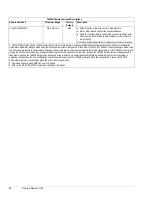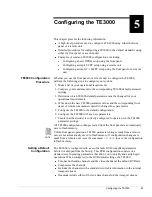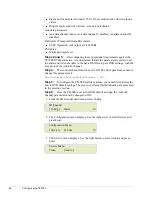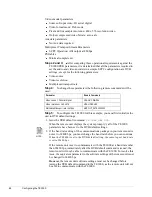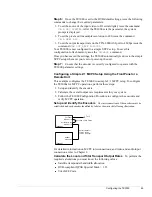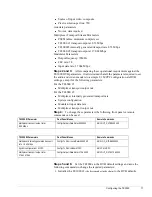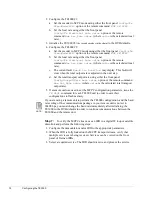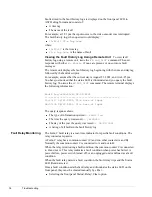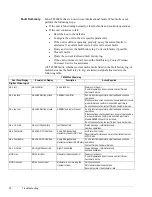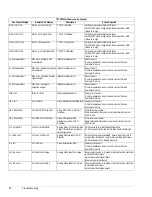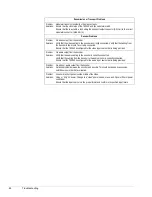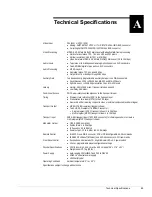
76
Troubleshooting
Faults stored in the fault history log are displayed on the front panel LCD in
ASCII string format and consist of:
!
A time tag
!
The name of the fault
For example, at 3:23 pm the input source to the video encoder was interrupted.
The fault history log, when queried, would display:
!
15:23:17 VI.x Inp Loss
where:
!
15:23:17
is the time tag
!
VI.x Inp Loss
is the name of fault
Viewing the Fault History Log Using a Remote Unit
To view fault
history log using a remote unit, issue the
FM LOG_LIST
command. The unit
responds with either
No Faults
if none are present, or one or more fault
messages.
The remote unit displays the fault history log beginning with the time and day tag
followed by the fault descriptor.
For example, assume that the current day is August 21, 2001, and it is 4:25 pm.
You have just noticed that the status LED is illuminated and you query the fault
history log. You issue the
FM LOG_LIST
command. The remote terminal displays
the following information:
Fault Log at16:25:43 08/21/2001
--------------------------------------------------
15:23:17 08/21/2001, VI.x Loss of Input
08:57:39 08/20/2001, VI.x Loss of Input
The query response shows:
!
The type of information queried —
fault log
!
The time the query was issued —
16:25:43
!
The day of the year the query was issued —
08/21/2001
!
A listing of all faults in the fault history log
Fault Relay Monitoring
The Form-C fault relay is a real-time indicator for specific fault conditions. The
relay contacts are passive.
A Form-C relay has a common contact (C) and two other contacts (A and B).
Normally the common contact C is connected to A and not to B.
When the relay is indicating a fault condition, the common contact C is connected
to B and not A. This relay indicates a fault condition when power has failed. A
power failure, power switch turned off, or an unplugged unit is defined as a fault
condition.
When the fault relay detects a fault condition, the fault relay trips and the Status
LED illuminates red.
Once a fault condition sets the fault relay and illuminates the status LED on the
front panel, they must be cleared manually by either:
!
Selecting the front panel Status>Relay>Clear option
Summary of Contents for TE3000
Page 10: ...viii Preface ...
Page 14: ...4 TE3000 Overview ...
Page 52: ...42 Using the Front Panel ...
Page 94: ...84 Maintenance and Software Upgrades ...
Page 96: ...86 Technical Specifications ...
Page 102: ...92 TE3000 PID Assignments ...
Page 112: ...102 Glossary ...

